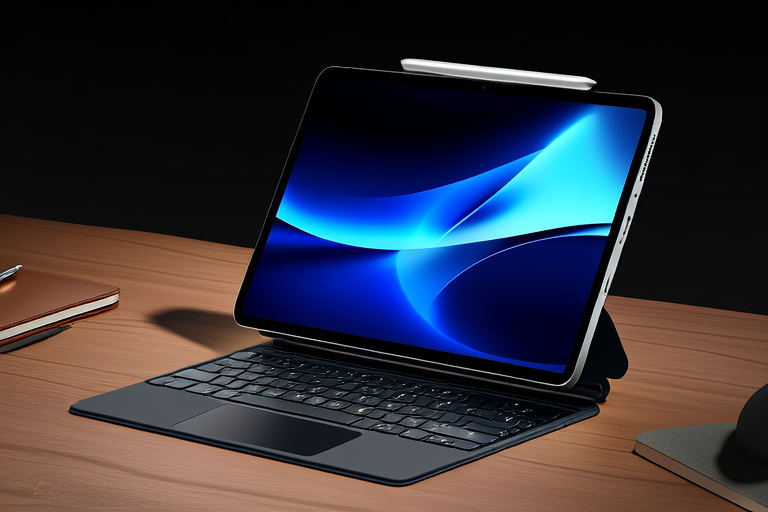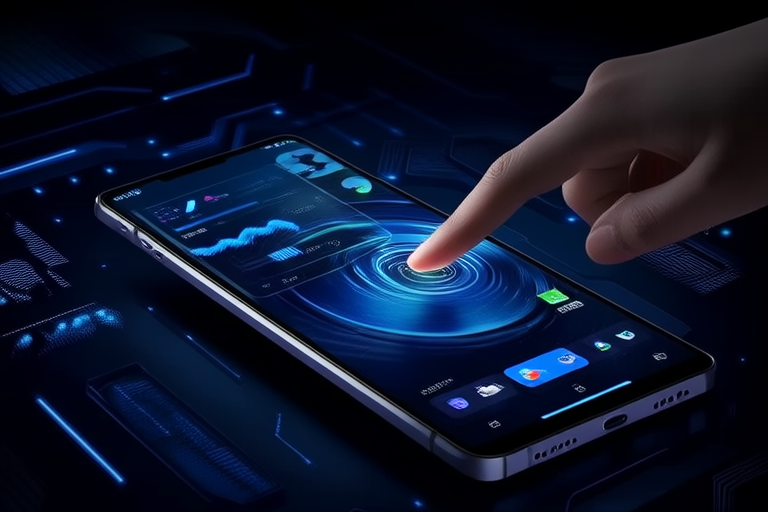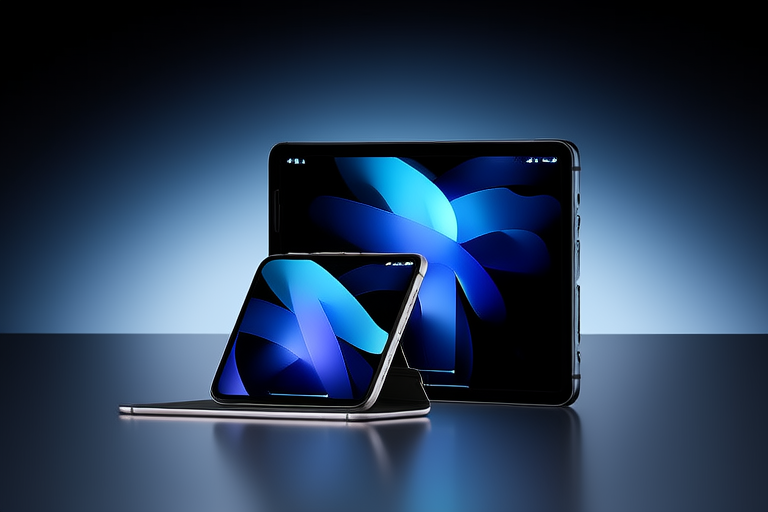“`html
Balancing Power and Portability: Key Features to Look for in Modern Tablets
Introduction
In today’s fast-paced world, tablets have become indispensable tools for both personal and professional use. Their versatility lies in their ability to balance powerful performance with unmatched portability. Advances in technology have made it possible for tablets to offer robust computing power while maintaining a compact form factor. Whether you’re a student, a business professional, or simply someone who enjoys staying connected on the go, understanding the key features that contribute to a tablet’s performance and portability can help you make an informed decision.
The right tablet can enhance your productivity, entertainment, and overall lifestyle. From browsing the web and streaming videos to running complex applications and editing documents, tablets have evolved to meet diverse needs. This article will guide you through the essential features to look for when choosing a tablet, ensuring you find one that perfectly balances power and portability.
Processor Performance
The processor, often referred to as the “brain” of the tablet, plays a crucial role in determining its overall performance. Two primary types of processors dominate the market: ARM-based processors and Intel processors. ARM-based processors are typically found in most tablets due to their energy efficiency and low power consumption, making them ideal for long battery life. Intel processors, on the other hand, are more commonly seen in hybrid tablets that also function as laptops.
When evaluating processor performance, consider factors such as clock speed, number of cores, and GPU capabilities. A higher clock speed means faster processing, while multiple cores allow for better multitasking. The GPU (Graphics Processing Unit) is responsible for handling graphics-intensive tasks, making it especially important for gaming and video editing. For instance, an octa-core processor with a high clock speed and a powerful GPU will deliver smoother performance and more responsive apps.
ARM-based processors, like those from Qualcomm and Apple’s A-series chips, are optimized for mobile devices, offering excellent battery life and performance. Intel processors, while more common in desktops and laptops, are also available in tablets and provide more robust performance, albeit at the cost of slightly shorter battery life.
Battery Life
Long-lasting battery life is essential for a tablet, especially if you plan to use it throughout the day without needing to recharge frequently. Battery capacity, measured in milliampere-hours (mAh), is a key factor in determining how long a tablet can operate on a single charge. However, it’s not just about having a large battery; efficient power management and energy-saving components also play significant roles.
Modern tablets often feature advanced power management systems that optimize battery usage based on your activities. For example, when you’re watching a video, the system reduces the performance of non-essential processes to conserve power. Additionally, energy-efficient components, such as low-power displays and efficient processors, contribute to longer battery life.
To maximize battery life, consider the following tips: adjust screen brightness to a comfortable level, enable auto-brightness, and turn off unused background apps. Many tablets also come with power-saving modes that reduce performance and extend battery life during critical times.
Display Quality
The display is one of the most important aspects of a tablet, directly impacting your viewing experience. High-resolution screens with vibrant colors and sharp images can significantly enhance your enjoyment of media content and improve productivity. Various display technologies are available, each with its own set of advantages.
Liquid Crystal Display (LCD) screens are common and offer good color reproduction and brightness levels. Organic Light-Emitting Diode (OLED) and Active-Matrix Organic Light-Emitting Diode (AMOLED) displays, on the other hand, provide deeper blacks, wider viewing angles, and more accurate colors. AMOLED screens, in particular, are known for their energy efficiency and vibrant visuals.
Resolution is another critical factor. Higher resolutions, such as Full HD (1920×1080) or Quad HD (2560×1600), offer sharper images and more detailed graphics. Refresh rates, which determine how quickly the display updates itself, are also important. A higher refresh rate (like 120Hz) provides smoother scrolling and transitions, enhancing overall responsiveness.
Color accuracy and brightness are equally vital, especially for professionals who rely on precise color representation. A well-calibrated display ensures that the colors you see match the intended output, whether you’re working on graphic design projects or simply enjoying movies.
Storage and RAM
Sufficient storage and RAM are crucial for multitasking and running demanding applications smoothly. Internal storage options vary widely, ranging from 64GB to 256GB or even more. While larger storage capacities offer more space for apps, files, and media, they come at a higher price point. Expandable storage options, such as microSD slots, provide flexibility by allowing users to add additional storage when needed.
RAM, or Random Access Memory, is responsible for handling active tasks and apps. More RAM allows for smoother multitasking and faster app switching. Generally, 4GB of RAM is adequate for basic tasks, but 6GB or more is recommended for heavier usage, such as gaming or video editing.
It’s important to assess your needs before deciding on the appropriate storage and RAM configuration. If you primarily use your tablet for browsing and light tasks, a lower-end model might suffice. However, if you need to handle multiple applications simultaneously or store large files, investing in a tablet with ample storage and RAM is advisable.
Portability and Design
The physical design and weight of a tablet greatly influence its portability. Lightweight materials like aluminum and magnesium alloys are commonly used to create slim, portable devices that are easy to carry around. Thin profiles and ergonomic designs further enhance portability without compromising durability.
Some tablets feature innovative design elements, such as detachable keyboards or stylus support, adding functionality and versatility. Detachable keyboards transform tablets into laptop-like devices, ideal for typing and productivity tasks. Stylus support is particularly beneficial for artists, designers, and anyone who prefers handwriting or sketching directly on the screen.
Consider the overall build quality and durability when selecting a tablet. Look for models that offer protection against drops and scratches, ensuring longevity and peace of mind.
Connectivity Options
Connectivity options are essential for seamless integration with other devices and networks. Wi-Fi, Bluetooth, and USB-C ports are standard features that enhance usability and productivity. Wi-Fi allows you to connect to wireless networks, enabling internet access and file transfers. Bluetooth supports wireless connections to peripherals like keyboards, mice, and headphones.
USB-C ports provide fast charging and data transfer capabilities, making it easier to sync files and charge other devices. Additionally, 5G support is becoming increasingly important for future-proofing your tablet, ensuring high-speed internet access even in areas with limited network coverage.
Software and Ecosystem Integration
The operating system and software ecosystem play a pivotal role in a tablet’s functionality. Popular platforms include Android, iPadOS, and Windows. Each has its strengths and weaknesses, catering to different user needs.
Android offers a wide range of customization options and access to the Google Play Store, providing a vast library of apps. However, fragmentation across different device manufacturers can sometimes lead to inconsistencies. iPadOS, on the other hand, is specifically designed for Apple’s hardware, offering a seamless user experience and tight integration with other Apple devices. Windows tablets, though less common, provide compatibility with a wide array of business applications and legacy software.
Seamless integration with other devices, such as smartphones and computers, enhances productivity. For instance, being able to easily transfer files between your tablet and smartphone or sync calendars and contacts can streamline your workflow.
Conclusion
In summary, choosing the right tablet involves considering several key features that balance power and portability. Processor performance, battery life, display quality, storage and RAM, design, connectivity options, and software integration all contribute to an optimal user experience. When making your decision, prioritize your specific needs and preferences.
If you require a tablet for heavy multitasking and gaming, opt for a model with a powerful processor, ample RAM, and high-resolution display. For those who prioritize portability and battery life, look for lightweight designs and efficient power management systems. Ultimately, the best tablet is the one that meets your unique requirements and enhances your daily activities.
“`




